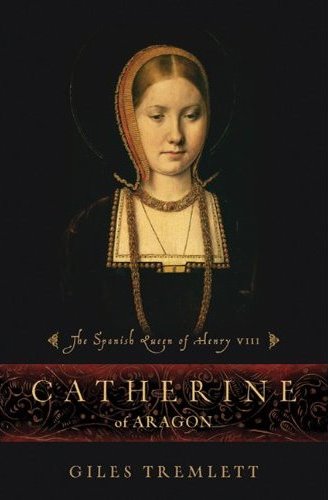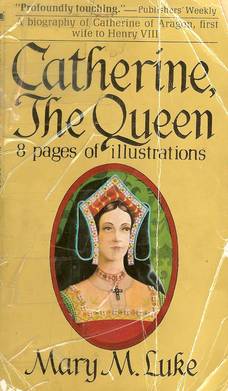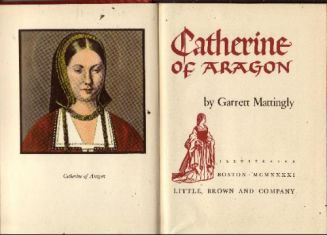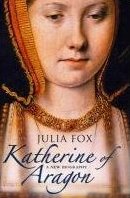| |
Submitted by: angelosdaughter
Comments: Very readable biography of Katharine of Aragon, even if Luke is obviously an admirer. Luke's writing style is vivid and immediate. She makes the reader feel present. The only criticism I have is that Luke uses too many secondary sources. She does use Cavendish and Roper, as well as collections of love letters from Henry to Anne Boleyn, the correspondence of Sir Thomas More and several other collections of correspondence from the period, but her omission of Chapuys' dispatches as well as the Spanish Calendar as sources (unless of course these sources were unavailable in 1967) are strange considering Katharine's friendship and close communication with the Imperial ambassador. I do think it is time for a new and, insofar as is possible, unbiased biography of Katharine incorporating new sources that have become availiable since 1967. This was one of the first books I read on the Tudor period and I have to say I love this book; I still reread it from time to time. |
|
Author: Garrett Mattingly (1941) |
Submitted by: Juliana-Angela
Comments: Garrett Mattingly was Professor of European History at the University of Columbia, New York. He specialised in sixteenth century diplomatic history, particularly Anglo-Spanish relations.
His biography of Katharine, written in 1941, remains the definitive work on Henry's first queen. Scholarly but very readable and beautifully written, it far surpasses subsequent works.
As one would expect, Professor Mattingly makes excellent use of primary sources, particularly the Calendars of State Papers, the Vatican archives, contemporary chronicles such as Hall and Polydore Vergil, and the family papers of Eustace Chapuys. His opinions are soundly based on his extensive research and whilst highly sympathetic to Katharine, he is not blind to her faults.
Professor Mattingly's other works include the bestselling 'The Defeat of the Spanish Armada' and the highly entertaining 'Renaissance Diplomacy (Penguin University Texts), a great source of information on the development of diplomatic relations in the fifteenth and sixteenth centuries and an excellent guide to the political manouverings of Henry and his contemporaries. |
|

2010 |
Submitted by: Juliana-Angela
Comments:Given the large number of books about Anne Boleyn, it is curious that there have been so few on 'the woman who was married to Henry for more than twice as long as all the other wives put together', as the author of this biography, Giles Tremlett, says. This is particularly strange in view of the wealth of material available - Catherine's royal birth ensures that we know far more about her childhood and early influences than that of Henry's other Queens, and many of her letters and those of her family are available in the Calendars of State Papers.
However, this biography, published in the UK on 3rd November 2010, was well worth waiting for. Giles Tremlett has been the Spanish correspondent of 'The Guardian' newspaper for the past twenty years, and makes excellent use of the most recent research and of Spanish archive materials as well as English. One of the most fascinating is a document which details the testimony given by some of the Spanish witnesses to her first marriage, which was recorded in Zaragoza in 1531. These witnesses paint a very different picture from those who testified at Henry's request: they describe Arthur as a frail, weedy youth, of whom Catherine was reported to have said that she doubted whether he would ever be able to have intercourse with her.
Mr. Tremlett provides fascinating detail on Catherine's childhood at the peripatetic Court of her parents, Ferdinand and Isabella. I particularly liked the way that he did not fall into the error - to which previous writers have been prone - of over-emphasising the importance of her mother at the expense of her father. He gives touching glimpses of the young princess growing up - her Treasurer's accounts details the puchase of 'a little push-cart, to show the Infanta how to walk' (a fifteenth century version of the modern babywalker).
Catherine's trials and tribulations in her widowhood are well-described. Isolated at Durham House and then at in an obscure corner of the Court, surrounded by squabbling servants, she fell prey to depression and prolonged illness. At one point, she was rebuked by Pope Juilius for excessive fasting - perhaps a form of anorexia which may have hampered her efforts to provide an heir in later years, although her ability to conceive was apparently not impaired. That boredom and frustration were responsible for her poor health was clear to observers at the time, and she took on a new lease of life in 1507 when her father made her his ambassador, the first woman in history to hold such a position.
Henry's genuine love for Catherine in the early years of their marriage shines through this book - he described her as his 'beautiful angel' and told a Spanish visitor that he was jealous of a letter which she had tucked in her bodice 'because it was in her breast'. Although very different in chracter, they had many interests in common and were well-matched in scholarship. Both enjoyed hunting, and Catherine was especially fond of hawking. The beautifiul, lively Queen of these early years was very different from the pious frump of popular imagination. Henry left Catherine as Regent when he went to war in France, during which time she gained a notable victory over the invading Scots, and relied on her advice and organisational skills.
But as we know, it all ended in tears. Although Henry was well aware of Catherine's intelligence and political abilities, he seriously underestimated her when it came to 'the Great Matter'. She refused to bow out quietly, anticipated all his moves, and used her considerable PR skills to maximise public support. Her appearance at the Blackfriars trial was a masterpiece of stagecraft which so flummoxed Henry that he granted her request for an appeal to the Pope. I had not fully realised until I read this book how weak Henry's case for dissolving their marriage was, particularly after the original Brief from the Pope was found in the former ambassador Rodrigo de Puebla's papers. At times, Henry was reduced to such ludicrous ploys as advising the Pope that his late brother had been a sex-addict who continually demanded women for his bed and complained that Catherine alone was unable to satisfy him!
On the perienially thorny question of whether the marriage of Catherine and Arthur was consumatted, Mr. Tremlett states firmly that 'the truth of Catherine's virginity will never be known'. He thoughtfully details the evidence for and against. However, he considers Henry's failure to provide a sworn statement to the effect that she had not been a virgin when they married 'the strongest evidence'.
Catherine emerges from this book as a very strong, intense, stubborn woman who was fully aware that her actions in defying Henry could lead to England's break with Rome, or even to her own and her daughter's executions. But she was not willing to give up what she saw as her rightful position as Queen or to compromise Mary's position as the future Queen. However, she remained as devoted to the English people as most of them were to her, and refused to encourage them to rebel against Henry or to push her nephew Charles into declaring war on him. 'We can only speculate about the bloodshed prevented by her decision and the radically different course that Europe's history might have taken had Catherine opted for war', as the closing words of this biography state.
Giles Tremlett's book is excellently written and extremely readable, with a fine sense of drama and vivid descriptions of the sumptuous clothes, furnishings and pageantry of the English and Spanish Courts. He brings not just Catherine but also Henry to life and helps us to understand their actions and their weaknesses. The only real criticism that I would have is the lack of footnotes, which is not down to the author but the publishers, who chose to put them online rather than including them in the book. A strange and irritating omission which, I gather, will be remedied in the upcoming American edition. |
|





